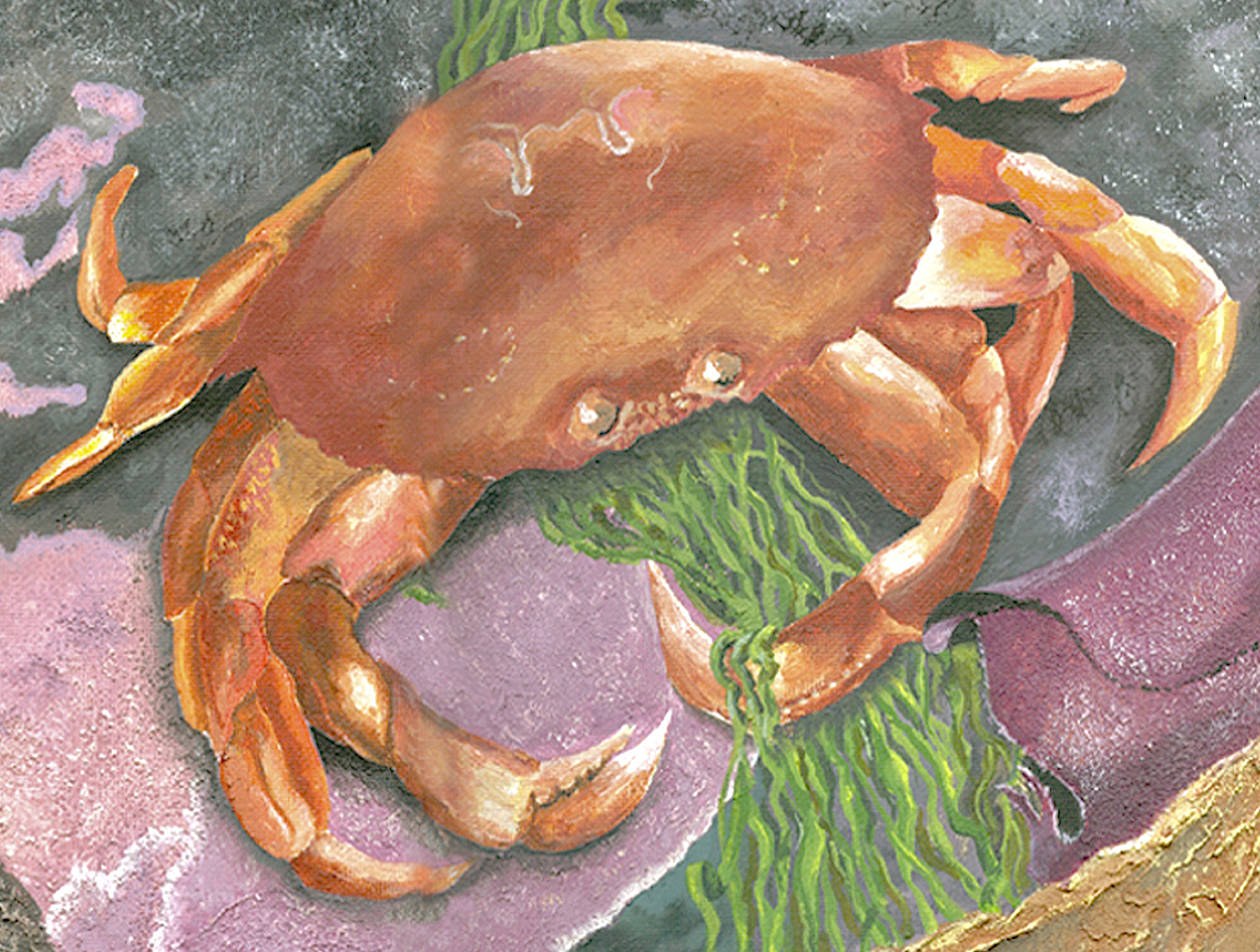A ferry ride to Seattle provides a panoramic view of the city skyline and (on a clear day) a glimpse of Mount Rainier raising its snowy head. But did you ever wonder what’s going on below the boat?
First, let’s get oriented. Puget Sound is an arm of the “Salish Sea,” which includes the Strait of Juan de Fuca (our waterway to the Pacific) and the Strait of Georgia (Hello, B.C.). Ever wonder what you’d see if the Sound was drained?
Imagine a panorama of winding canyons, towering cliffs and deep troughs, all carved by glaciers over 10,000 years ago. The deepest place? About 930 feet.
As one descends, underwater habitats change; each nurtures its own life forms, from microscopic creatures up to our local whales.
Let’s start at the very top. Prowling a Kitsap beach during our lowest tides, you encounter marine life temporarily stranded: sea stars, clams, sea urchins, barnacles, snails and numerous others. Thick beds of eelgrass are partially exposed, shiny green blades slumped on the wet sand. Deeper, these rich grasses shelter a host of fish species; they also provide spawning grounds for herring, pathways for migrating salmon and food for waterbirds.
Deeper still, sea otters might be diving down to feed on spiky sea urchins (ouch). In all, our Sound nurtures 200 species of fish, 26 species of marine mammals, 3,000 species of invertebrates (animals without backbones), 100 species of seabirds and countless saltwater plants.
Ready for the downside? The Sound is flushed daily by the tides, but not enough to clean it of the waste from a large human population. Furthermore, climate change is rapidly melting Earth’s ice fields, causing the sea level to rise. Thus, salt water is slowly creeping into our local freshwater marshes, altering their ability to host a variety of wintering sea birds.
Intertidal wetlands are eroding, causing beaches to shrink. Many wildlife species, even salmon, will have difficulty adapting to such changes.
Are the cards stacked against this watery world at our doorstep? We humans clustered around the Sound need to understand that all living things occupying our lands and waters are interdependent. It’s time for a “sea change,” a reversal of the regrettable trends we’re responsible for. We hear a lot about conserving wildlife; the first way is to conserve the natural habitats they depend upon.



